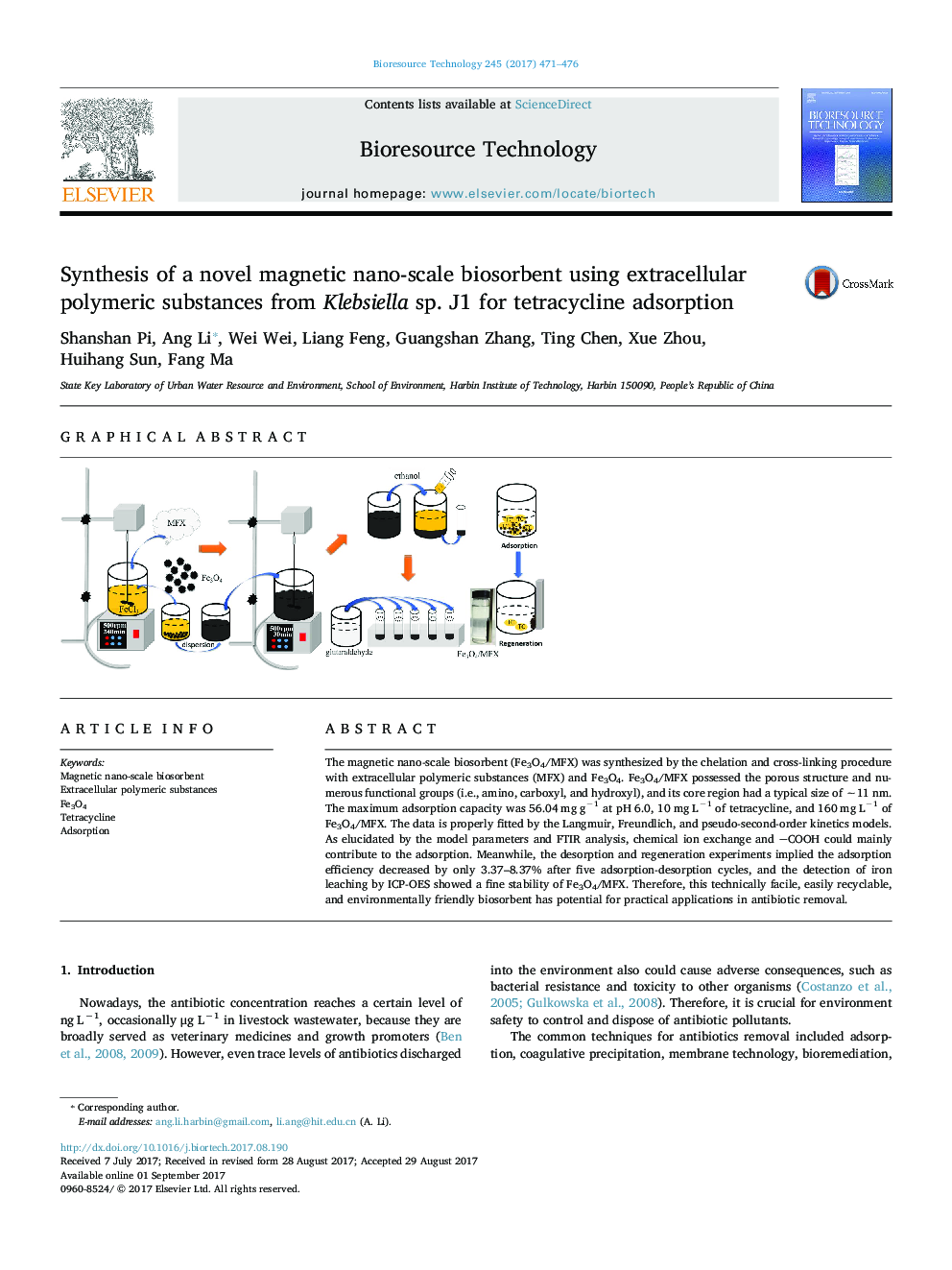| کد مقاله | کد نشریه | سال انتشار | مقاله انگلیسی | نسخه تمام متن |
|---|---|---|---|---|
| 4996776 | 1368274 | 2017 | 6 صفحه PDF | دانلود رایگان |

- The synthesis method of a novel nano-scale biosorbent was developed.
- The maximum adsorption capacity of as-prepared Fe3O4/MFX was 56.04 mg gâ1.
- The adsorption mechanism is predominated by chemical ion exchange and COOH.
The magnetic nano-scale biosorbent (Fe3O4/MFX) was synthesized by the chelation and cross-linking procedure with extracellular polymeric substances (MFX) and Fe3O4. Fe3O4/MFX possessed the porous structure and numerous functional groups (i.e., amino, carboxyl, and hydroxyl), and its core region had a typical size of â¼11 nm. The maximum adsorption capacity was 56.04 mg gâ1 at pH 6.0, 10 mg Lâ1 of tetracycline, and 160 mg Lâ1 of Fe3O4/MFX. The data is properly fitted by the Langmuir, Freundlich, and pseudo-second-order kinetics models. As elucidated by the model parameters and FTIR analysis, chemical ion exchange and COOH could mainly contribute to the adsorption. Meanwhile, the desorption and regeneration experiments implied the adsorption efficiency decreased by only 3.37-8.37% after five adsorption-desorption cycles, and the detection of iron leaching by ICP-OES showed a fine stability of Fe3O4/MFX. Therefore, this technically facile, easily recyclable, and environmentally friendly biosorbent has potential for practical applications in antibiotic removal.
90
Journal: Bioresource Technology - Volume 245, Part A, December 2017, Pages 471-476